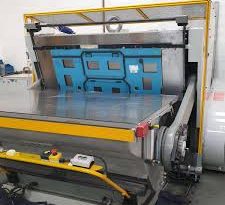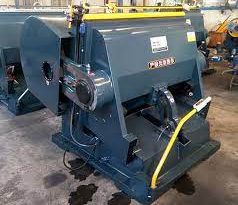“Revolutionizing Manufacturing: The Cutting-Edge Innovations Reshaping Die-Cutting Machinery for Enhanced Precision and Efficiency”
Die-cutting machinery, a fundamental tool in the manufacturing and packaging industries, has undergone a dramatic transformation over recent years. This technology, essential for cutting intricate shapes and designs out of various materials, has become increasingly sophisticated, integrating the latest innovations to enhance precision, efficiency, and versatility. Here’s a closer look at how modern technology is revolutionizing die-cutting machinery, offering manufacturers new levels of capability and flexibility.
Enhanced Precision and Speed: Modern die-cutting machines now feature advanced servo motors and precision control systems that significantly increase the speed and accuracy of the cutting process. These systems can handle intricate cuts with high repeatability, ensuring that every piece is exactly the same. This precision is vital for industries where even minor discrepancies can lead to significant losses, such as in electronics or automotive manufacturing.
Integration of Advanced Materials: As materials science advances, die-cutting machinery has adapted to work with a wider range of materials, including composites, textiles, and advanced polymers. This adaptability opens up new applications in sectors such as aerospace and biomedical engineering, where cutting precise components from complex materials is often required.
Automation and Robotics: The integration of robotics and automation into die-cutting systems has streamlined many of the processes involved in die-cutting, from material handling to the actual cutting process itself. Robotic arms equipped with cutting dies can automatically adjust their parameters based on the material and design specifications, reducing the need for manual intervention and thereby increasing overall productivity.
IoT and Connectivity: Die-cutting machines are increasingly equipped with Internet of Things (IoT) technology, allowing for remote monitoring and operation. This connectivity enables operators to optimize production schedules, perform troubleshooting, and maintain equipment from anywhere in the world. Furthermore, data collected from IoT-enabled machines can be analyzed to predict maintenance needs and optimize machine performance, minimizing downtime.
Sustainability Enhancements: Environmental considerations are now at the forefront of machine design, including die-cutting machinery. Newer models are more energy-efficient, reduce waste by maximizing material usage, and often incorporate features that facilitate the recycling of scrap materials. These enhancements not only help companies reduce their environmental footprint but also improve cost-efficiency by reducing material costs.
User-Friendly Interfaces: Contemporary die-cutting machines come equipped with touchscreens and user-friendly interfaces, making them easier to operate. This ease of use reduces training time for staff and increases the flexibility of operations, allowing for quick changes between jobs and reducing setup times.
Safety Features: Enhanced safety features in modern die-cutting machines ensure that operators are protected at all times. These might include light curtains, safety sensors, and emergency stop features, which help prevent accidents and enhance the overall safety of the manufacturing environment.
The ongoing advancements in die-cutting machinery technology are enabling manufacturers to achieve more precise cuts, faster production times, and greater material efficiencies. These improvements not only boost productivity but also enhance the quality of the final products, ensuring that companies can meet the growing demands of their diverse customer bases more effectively. As technology continues to evolve, the potential for even more innovative applications and efficiencies in die-cutting remains vast, promising a future where precision manufacturing is more accessible, sustainable, and cost-effective.


